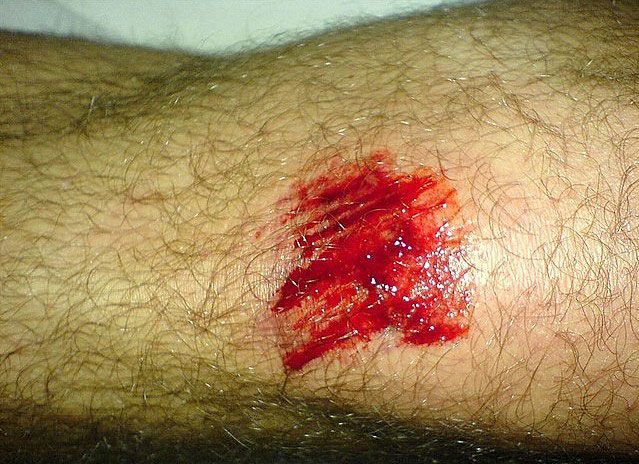- Clinical Technology
- Adult Immunization
- Hepatology
- Pediatric Immunization
- Screening
- Psychiatry
- Allergy
- Women's Health
- Cardiology
- Pediatrics
- Dermatology
- Endocrinology
- Pain Management
- Gastroenterology
- Infectious Disease
- Obesity Medicine
- Rheumatology
- Nephrology
- Neurology
- Pulmonology
Superficial Abrasion After a Fall From a Bicycle
This biker asked that his wound be rinsed with hydrogen peroxide, which is now felt to be irritating to tissue and no longer recommended for use in rinsing out a traumatic wound. Water or saline is preferable. Also, superficial abrasions heal better when kept moist.

A 30-year-old man was participating in a charity bicycle marathon when he accidentally fell off his bicycle, striking the path. He presented to the event’s first aid tent where a dermatologist was among those on voluntary duty.
Key point: This is clearly a superficial abrasion, although some fine particles of gravel are visible within the wound. Sutures are not indicated. The patient requested hydrogen peroxide rinse.
Treatment: The wound was thoroughly rinsed with sterile water to remove gravel and other potential debris. It was then dressed with an antibiotic ointment, petrolatum gauze, and a fitted gauze wrap. The patient had received a tetanus toxoid booster shot within the past 10 years.
Note: Hydrogen peroxide is now felt to be irritating to tissue; it is not recommended for use in rinsing out a traumatic wound. Water (or saline) is preferable. Superficial abrasions and other cutaneous wounds actually heal better when kept moist rather than dry. Hence, the application of an ointment to the wound bed.
